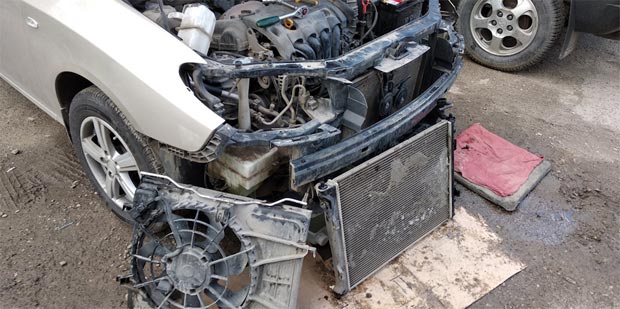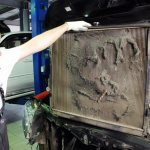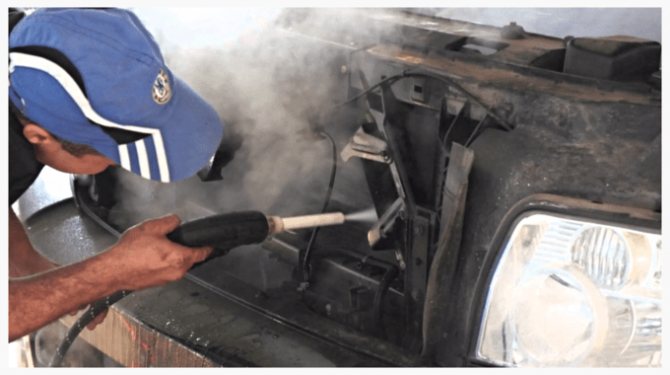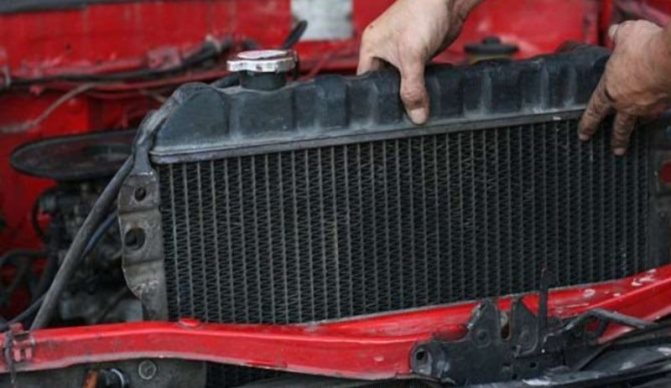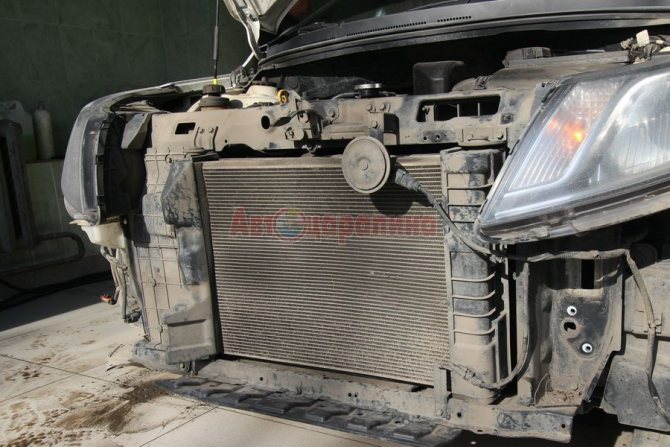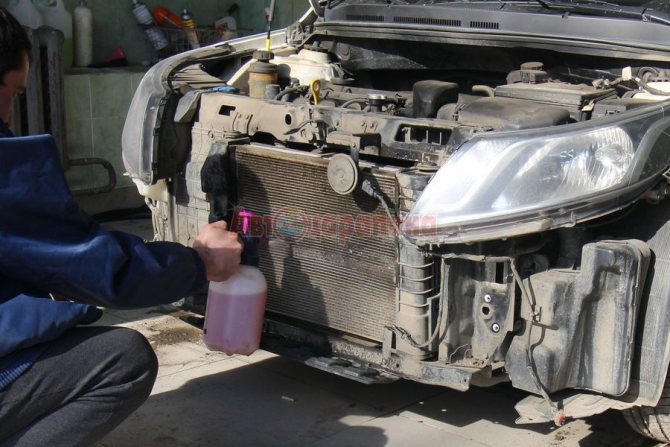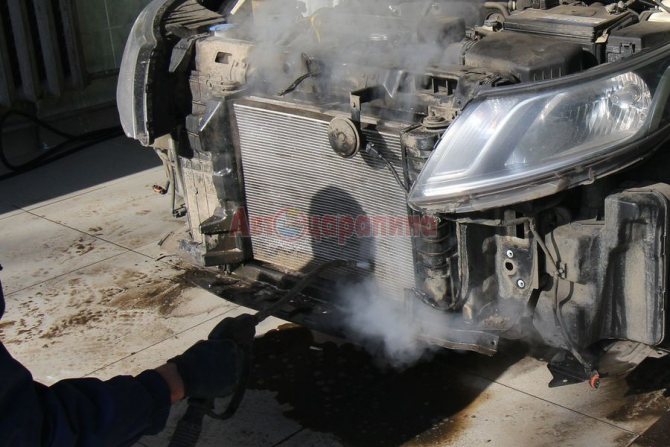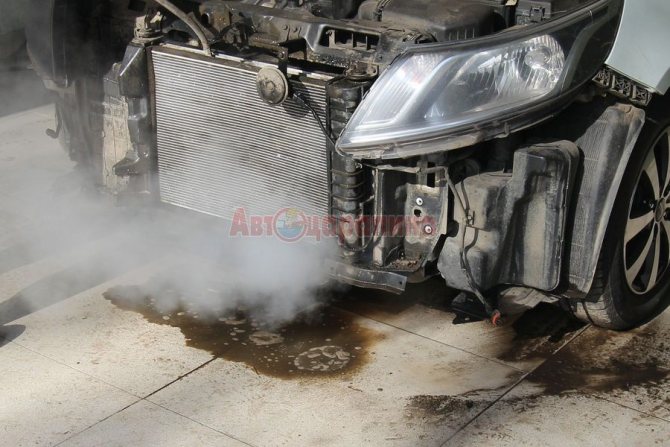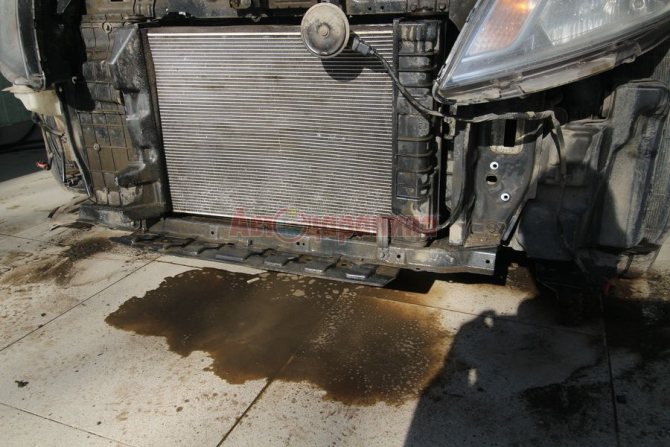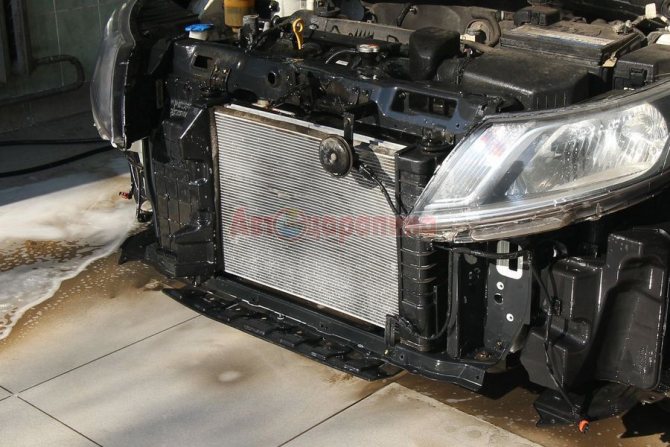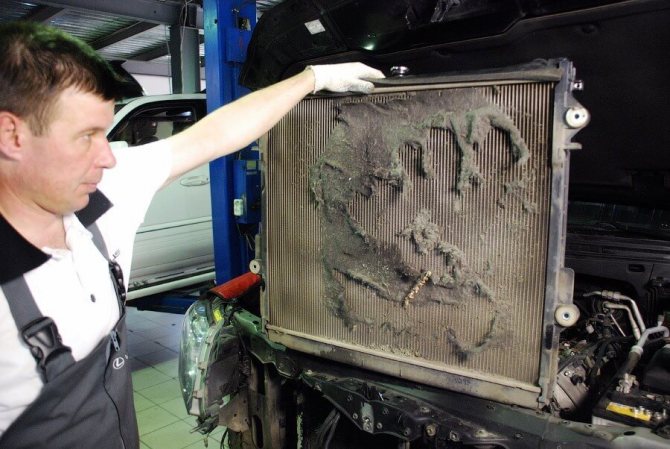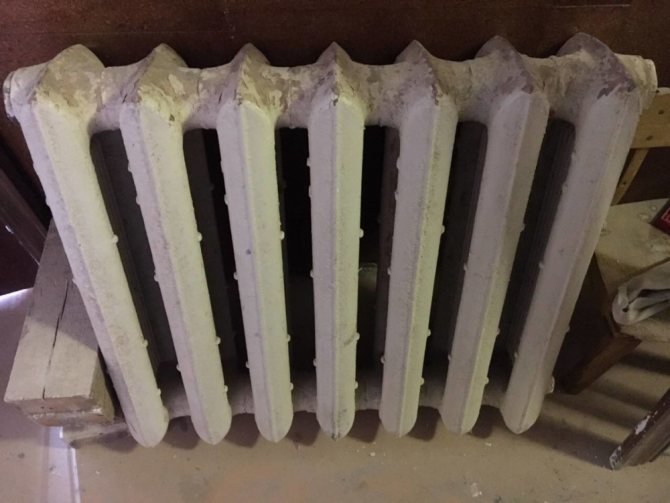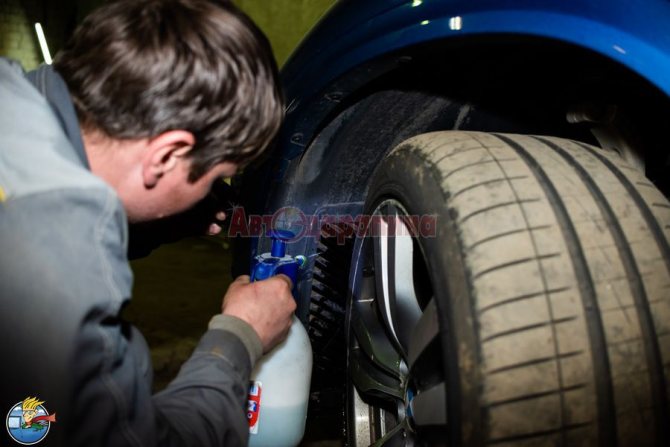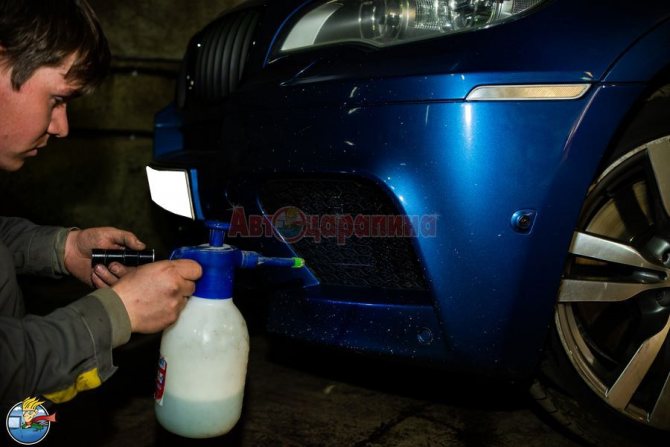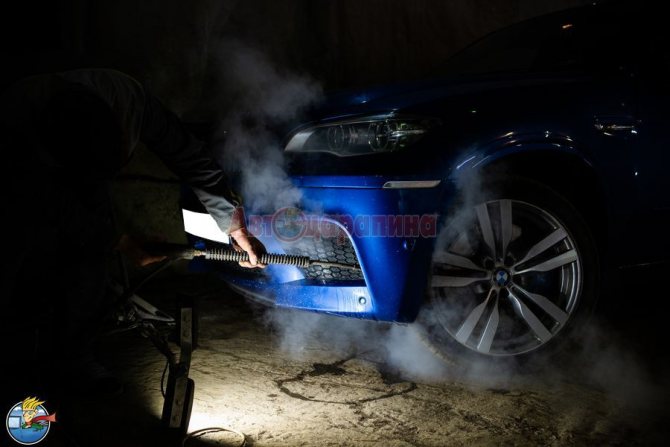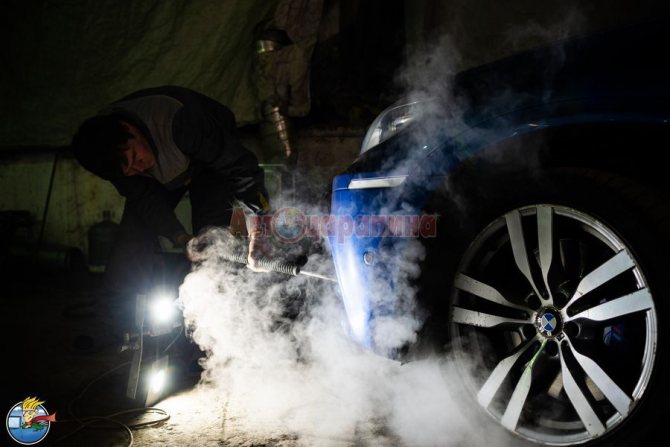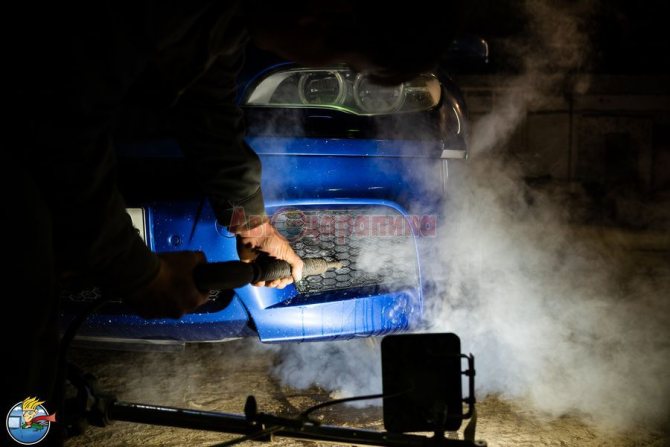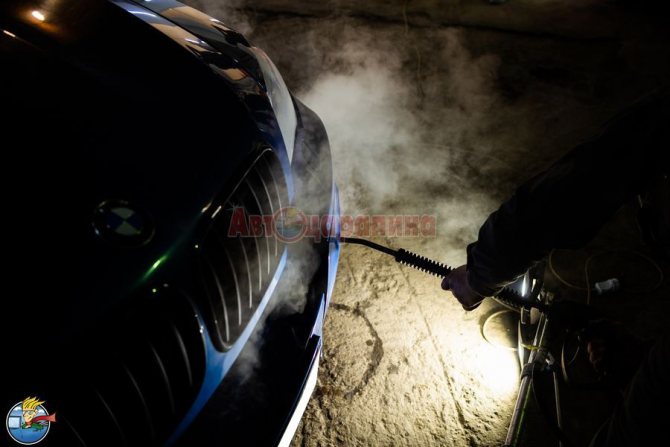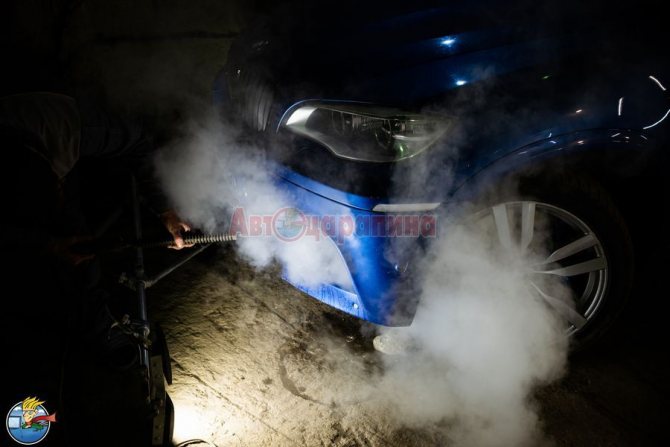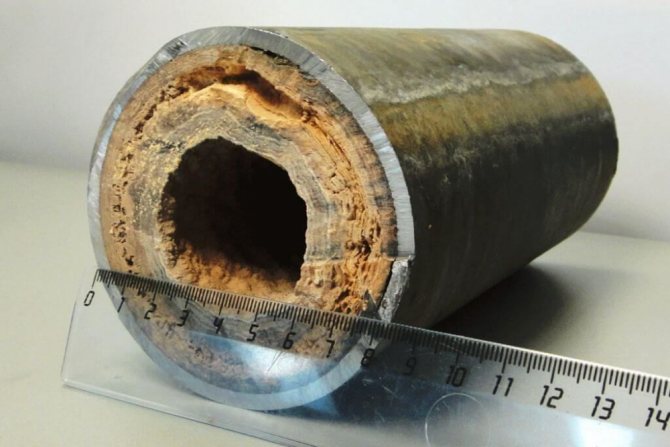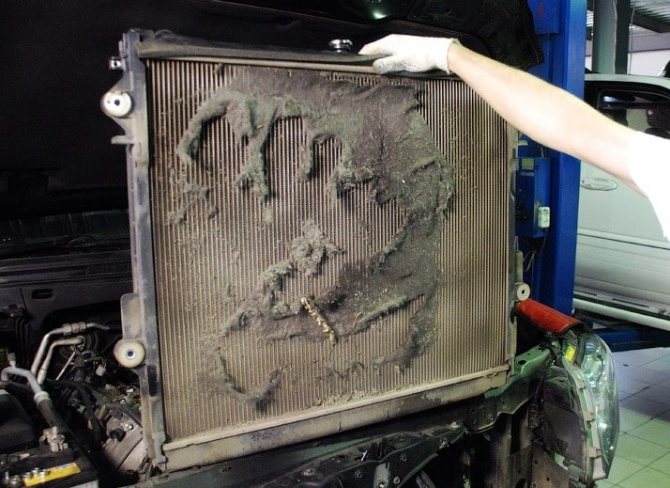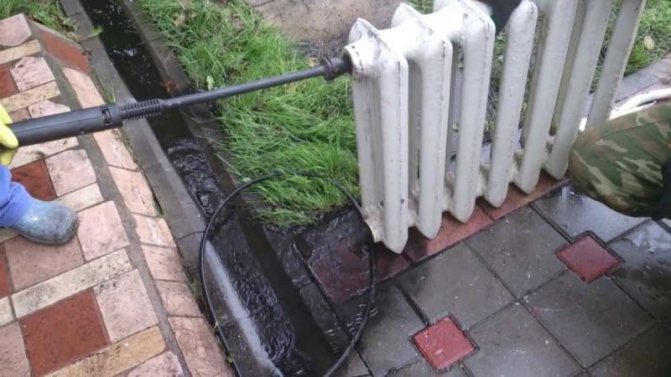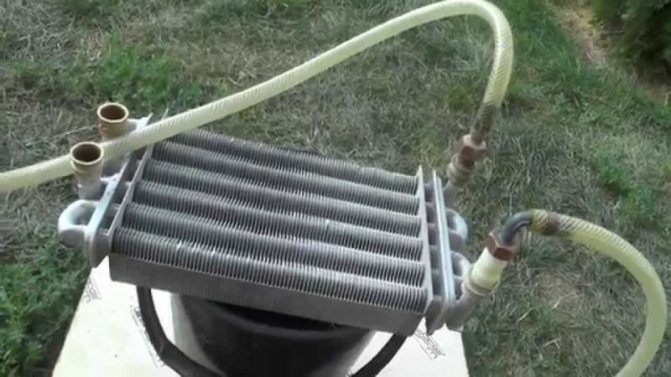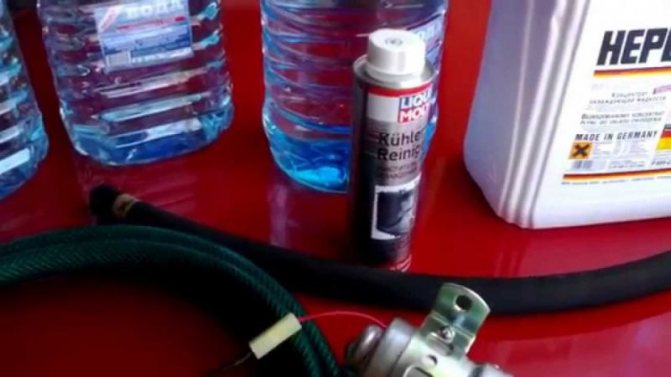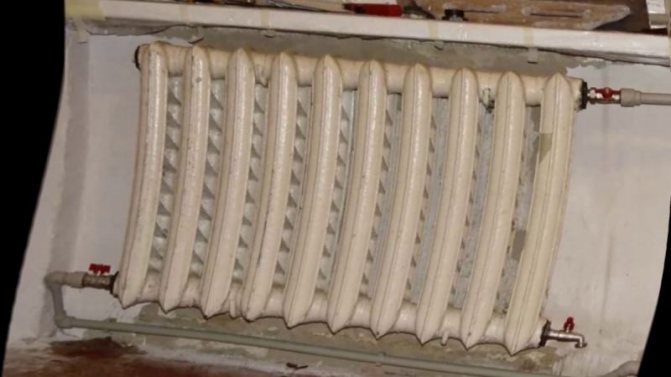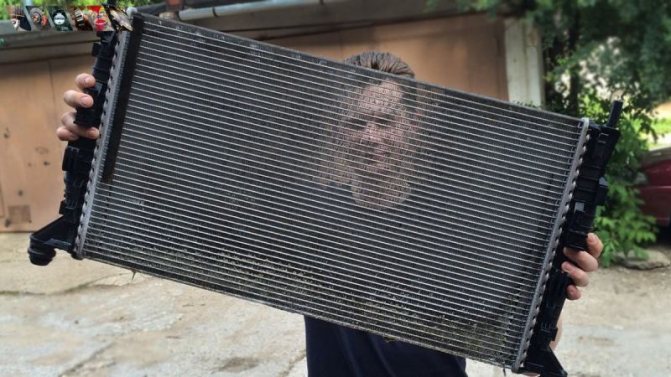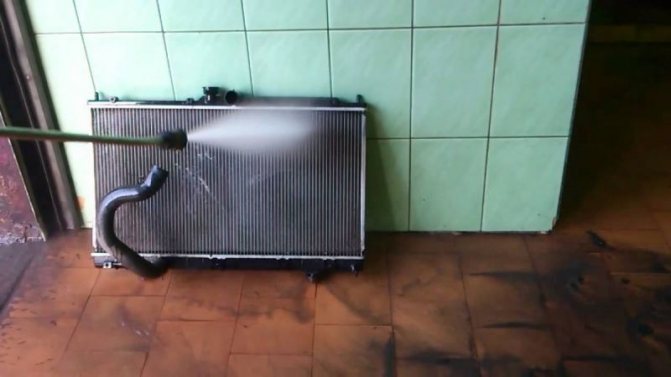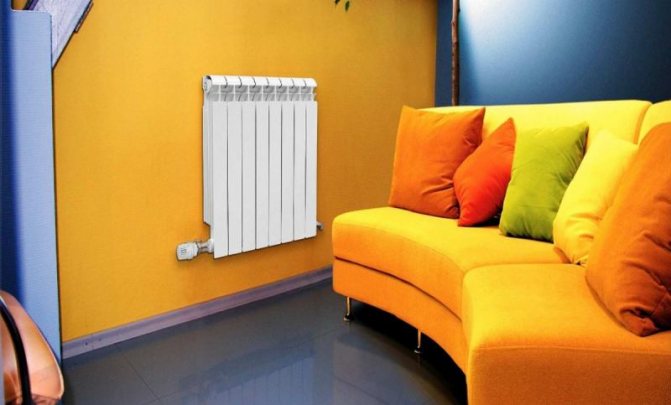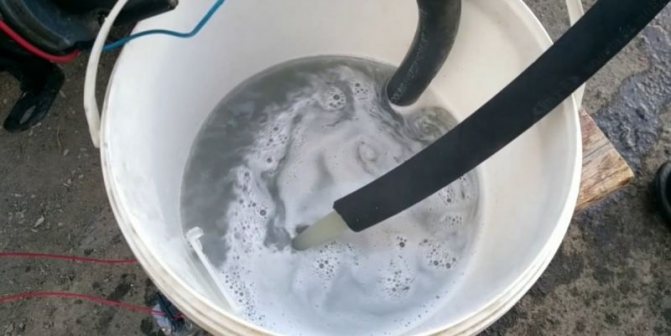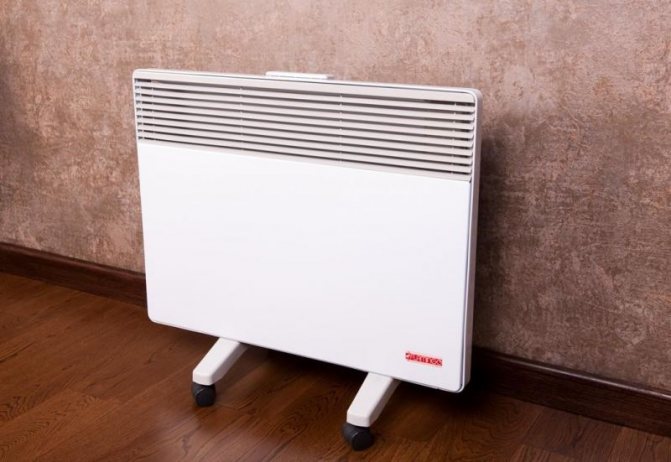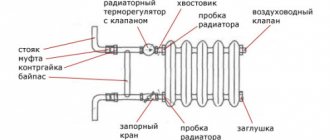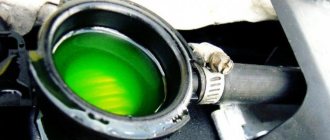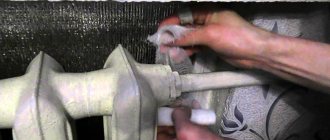Hello dear readers and have visited the blog Avtoguid.ru. In the article, you can find out how to flush a car's radiator with your own hands without outside help. It belongs to the operations of caring for the machine and does not require the use of special equipment. All actions can be performed at home. You do not need to have specific knowledge, enough desire and a little free time.
It is better to flush the car radiator on the weekend when you have free time. Haste in this case is a bad helper, because the quality of the work performed will suffer. Often, if it is necessary to repair the radiator if it is damaged, then flushing is simply not enough. This is one of the most important steps in the preparatory process. After carefully reading the article, it will be possible to perform all flushing operations promptly and without loss of quality.
Do-it-yourself car radiator rinsing
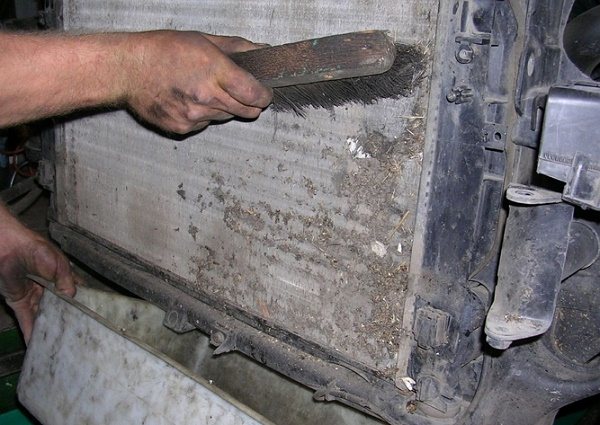
Contamination of the radiator is not only dangerous due to overheating of the motor. Numerous foreign elements on its surface can become a catalyst for a corrosive process. It gradually begins to break down the material of the radiator, thereby causing the coolant to leak.
That is why it is very important to do it yourself in a timely and efficient manner. Experts recommend cleaning the inside and outside of the radiator at least once a year. This is the optimal period of time to maintain it and maintain maximum performance.
There are 2 ways to flush a car radiator:
Internal flushing.
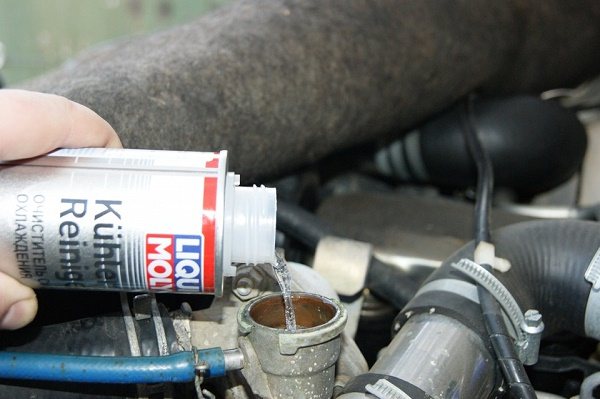

The inside of the radiator is cleaned from dirt. Special means are used to remove scale and foreign elements inside the radiator.
The order of performing the actions is as follows:
- the car engine must be turned off;
- open the hood of the car and wait for the engine to cool;
- drain the coolant from the system (the drain hole is located at the bottom of the radiator);
- pour distilled liquid into the system (as a rule, 5-7 liters are enough, depending on the car model);
- start the car engine and let it run for about 20 minutes;
- drain and refill with distilled liquid;
- repeat the operation at least 3 times.
It is imperative to add a radiator cleaner to the distilled liquid poured into the cooling system. Washing efficiency increases several times. The dosage of the chemical will be listed on the instructions. It must be observed to prevent damage to the cooling system.
Internal flushing the car radiator with your own hands allows you to clean the system from slag, scale, rust and antifreeze sediment. The permeability of the pipes of the cooling system is improved and the circulation of antifreeze is enhanced. The special composition of the cleaning agent is harmless to plastic, rubber and metal elements.
After using the cleaning agent, experts recommend performing a control flush of the system. Ordinary pure distilled water is used. Often, residues of the cleaning agent provoked corrosion inside the car's radiator. After cleaning the internal elements of the radiator, you can proceed to the next step.
External flushing of the car radiator.
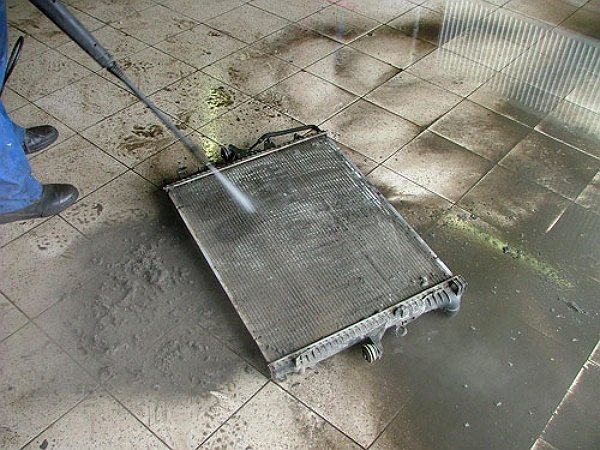

Clearing dirt outside the radiator can increase the cooling efficiency of the motor by 20-30 percent.If in spring, winter and autumn the urgency of cleaning the radiator is not very high, then in the summer all problems begin to creep out.
It is necessary to start the second stage of cleaning the radiator from contamination after the end of the first stage of the work.
It can be divided into the following components:
- dismantling the front bumper of the car (in some car models it is impossible to remove the radiator without dismantling the bumper);
- dismantling of an automobile radiator;
- the main task is to remove adhered debris from its surface;
- a minisink is used (Körcher type);
- a jet of water under pressure removes dust, dirt and insects from the surface of the radiator.
A convenient and quick way to tidy up your radiator. If you don't have a mini-sink at hand, you can use an ordinary rubber hose.
The most important thing is not to overdo it with water pressure in order not to deform the radiator fins. After completing the water procedures, it is necessary to dry the car's radiator in a natural way. Only after making sure that there is no residual water can it be mounted in place.
The radiator is installed in its original place. For greater confidence, experts recommend changing the system hoses. Especially if the radiator has not been previously cleaned. After installing it in place, you can fill the system with antifreeze. It is imperative to run the engine for 20-30 minutes and check the performance of the radiator and the system. This completes the washing of the machine's radiator.
Cleaning process
Washing takes place in several stages. They include the following items:
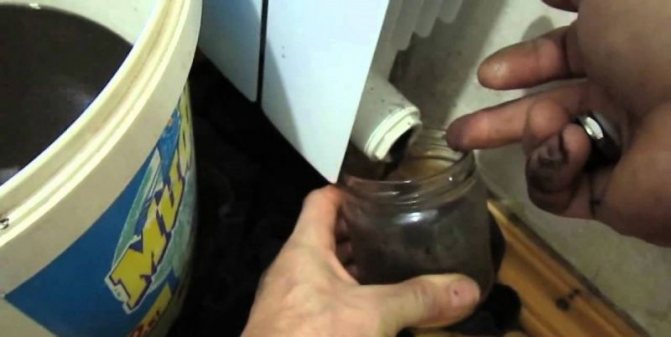

Disconnection of heating equipment from the central network. We remove the stubs.
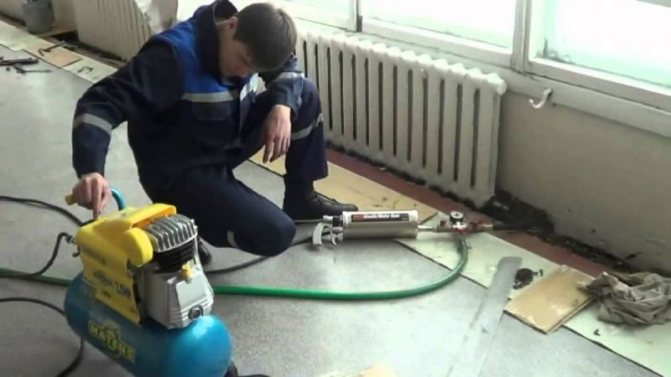

We pour a small amount of burning water with a chemical liquid into the radiators. We leave for 1 hour


Vertical heating radiators - how to choose the ideal heating radiator and features of its application (90 photos + video)
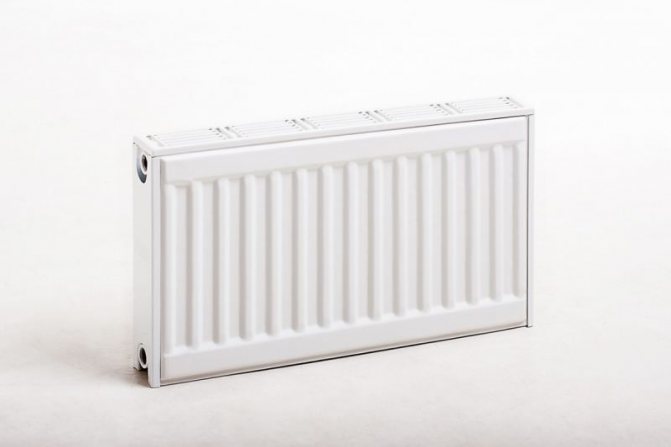
Heating radiator power: calculation of thermal power and method for calculating heating radiators (85 photos and videos)


Heating radiator piping - connection diagrams and options for choosing a connection method (drawings + 90 photos)
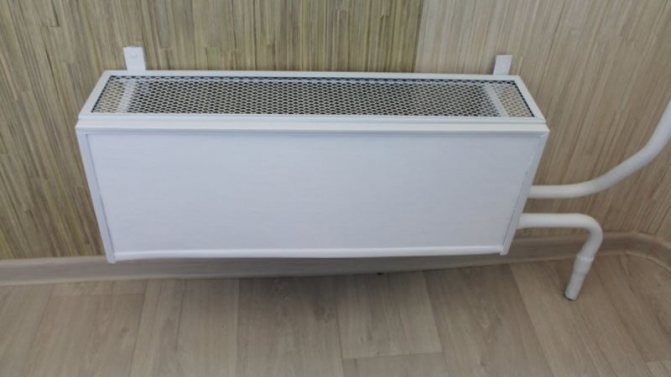

After that, we drain the dirty liquid into the sewer. Experienced plumbers recommend using a special sieve to prevent large debris from entering the drain hole.
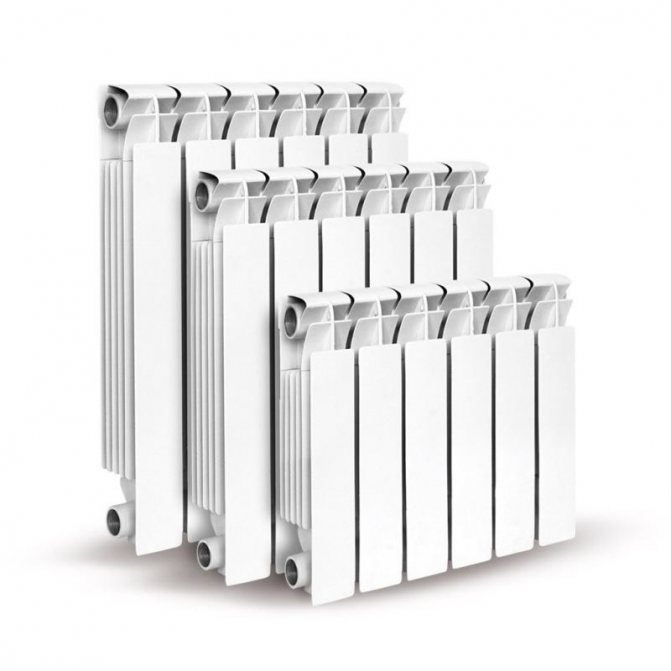

We carry out repeated washing with a chemical composition. Next, we carry out a gentle tapping over the entire area of the product. This will help remove thick layers of rust and limescale.
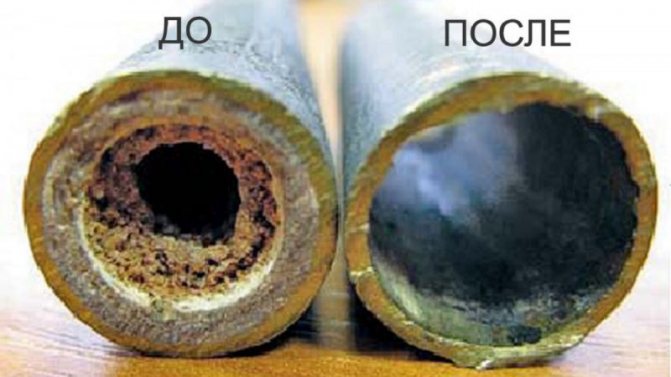

The photo of washing the heating radiator shows the workflow.
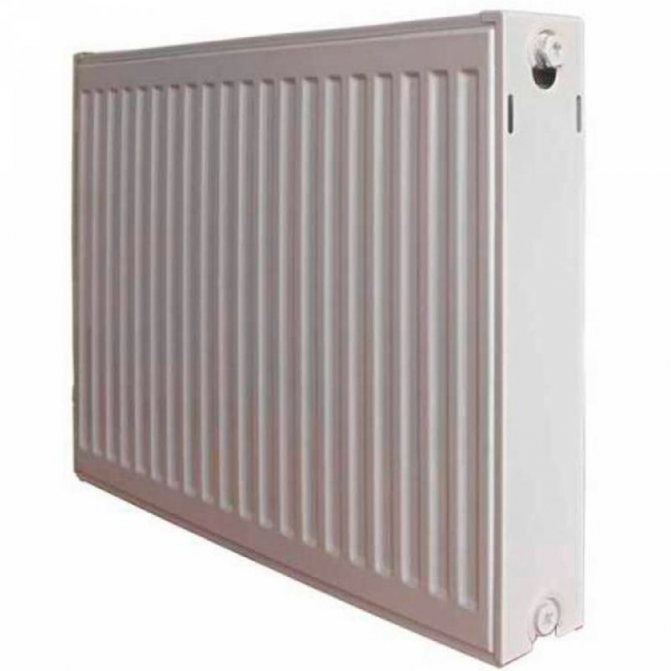

Car radiator cleaning products
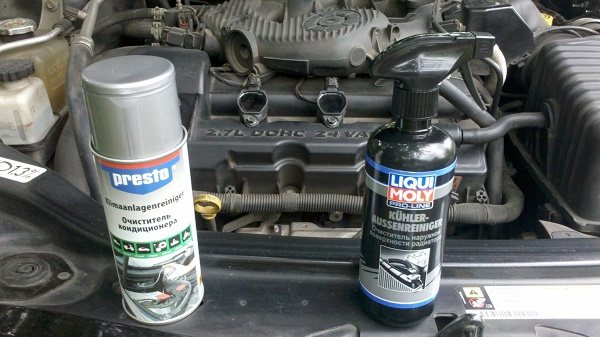

On sale you can find a large number of tools for flushing the car's radiator on your own. Experts recommend choosing products of the middle price range.
The following common means for internal cleaning of the radiator can be distinguished:
1. BARDAHL COOLING SYSTEM FAST FLUSH, cost 6-7 $ US dollars.
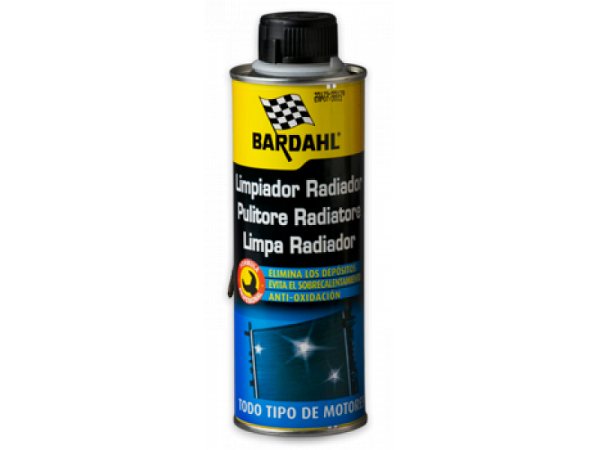

The capacity of the product is 300 ml. One bottle is enough to flush the entire engine cooling system. Perfectly dissolves and removes rust, scale, dirt and scale. Acts very quickly. Cleans the car radiator without having to dismantle it.
Can be used in all types of engines. Completely harmless to rubber, plastic and metal. Due to its low cost, it is popular. Low consumption and high efficiency.
2. Kuhler-Reiniger, cost 10-12 $ US dollars.
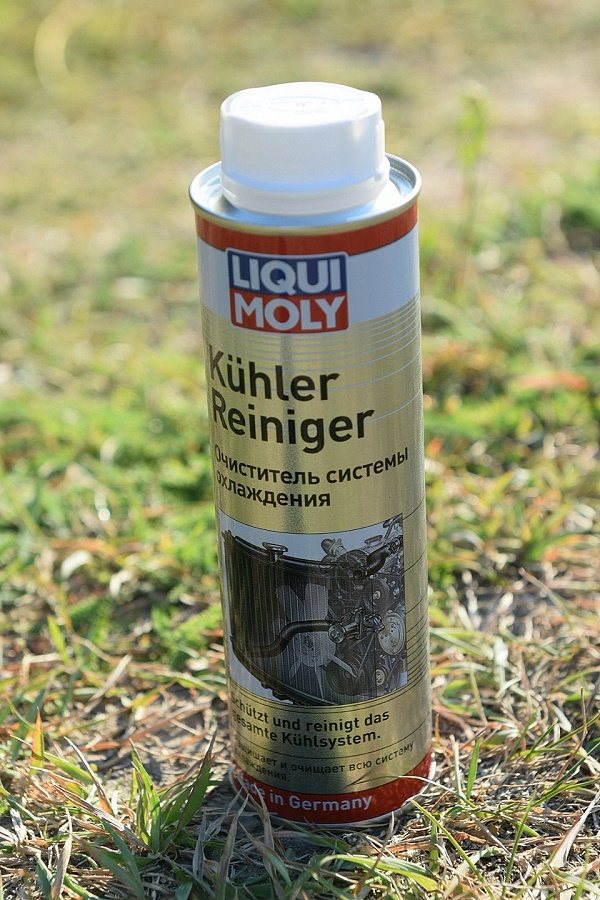

The volume of the product is 300ml. All types of dirt inside a car radiator are effectively removed. A popular and modern product that is easy to use. Doesn't require any special skills to use. Chemically decomposes radiator pollutants.
Among other things, it provides protection against corrosion and neutralizes hazardous acids. One bottle of the product is enough to flush the engine cooling system with a volume of 10 liters.
3. Verylube, cost $ 3-5 USD.
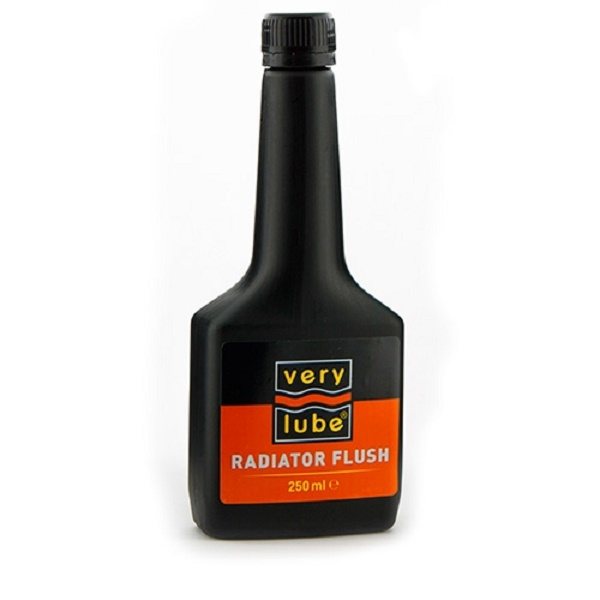

An effective tool for cleaning a car radiator. In a short time, it completely cleans the engine cooling system. Does not require special knowledge to perform work. Convenient and economical packaging. Forms an anti-corrosion film on the inside of the radiator.
Internal cleaning
For internal cleaning from scale and rust, you will need special fluids for flushing heating radiators, which are capable of destroying these layers on a metal product. They contain concentrated citric acid, caustic soda and vinegar essence.
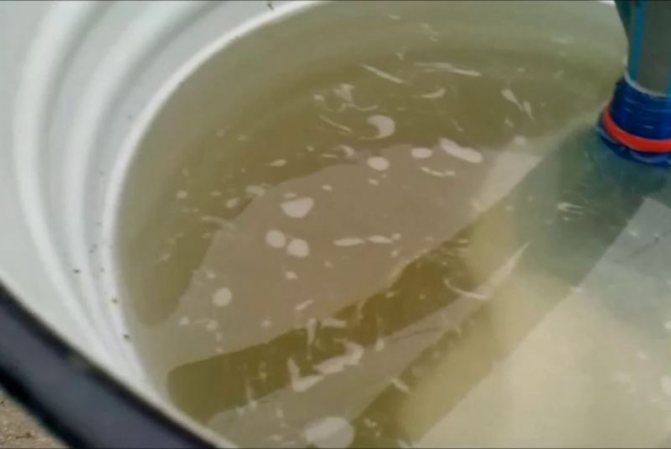

Mechanism of action and components
The car radiator exterior cleaner has the following functions:
- Increases engine power.
- Removes oxidizing films containing copper, aluminum, steel.
- Maintains the effectiveness of the coolant.
Oxidation, which increases progressively with increasing temperature, significantly slows down the transfer of heat from the coolant to the radiator. Heat build-up can damage or deform engine components, resulting in increased repair costs. In addition, with a dirty surface, the radiator overheats, which intensifies the process of formation of foci of corrosion.
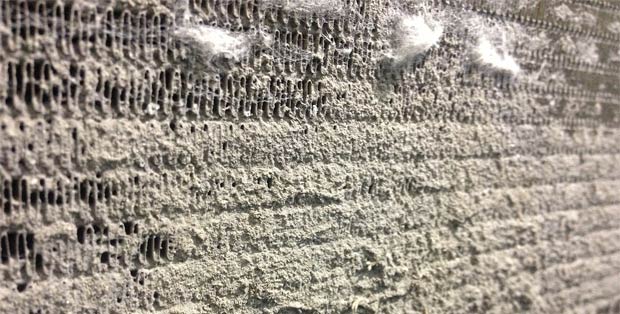

The composition of the cleaner is set taking into account:
- its harmlessness for paints, varnishes, rubbers;
- non-toxic to humans;
- fast biodegradability.
The effectiveness of a cleaner for the outer surface of a radiator largely depends on its ability to dissolve organic insect residues and ingrained dirt that is deposited during vehicle operation.
Some car owners solve the issue simply, and mechanically clean the outer surface using a jet of compressed air. To remove insects adhering to the radiator, small dust and dirt particles and other debris, this may be suitable (although damage to thin hundreds of cells by the dynamic effect of the jet is not excluded). But for chronic contamination, chemical cleaning with specialized compositions is considered much more effective. It usually contains a surfactant detergent and water. After cleaning, it is necessarily washed: first with warm water, and then with cold water.
